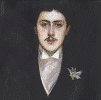Modern Languages and Literatures, Department of
Date of this Version
October 2006
Abstract
In many respects, the Fables ou Histoires allégoriques of Marie-Catherine Desjardins, more commonly known as Madame de Villedieu (1640?–1683), can be read in terms of the sexual politics of neo-classical France. Unlike many of her other works, the Fables serve in part as a defense and illustration of female presence and sexuality. A moral that emerges in the nine tales she classifies as “fables” is that the female gender proves as authoritative and as intelligent as the male and that female sexuality should be considered as natural and as legitimate as its masculine equivalent. In her dedication to Louis XIV, Villedieu apologizes for not rendering her Fables an example of “des leçons d’une vertu solide” (90). While her Fables do not always cast the behavior of male or female characters (in most cases insects and animals) in a virtuous light, neither do they portray this behavior as fraught with vice. Females speak less frequently than males in Villedieu’s fables, but the number of female characters and the intriguing ways in which they are presented demonstrate a unique sensibility to women and the conditions under which female identity is constructed in an erotic, social, and personal context.


Comments
Published in Formes et formations au dix-septième siècle. Actes du 37e congrès annuel de la North American Society for Seventeenth-Century French Literature. University of South Carolina, Columbia, 14–16 avril 2005. Édités par Buford Norman. Biblio 17, Volume 168 (2006), pp. 63–71. Copyright © 2006 Gunter Narr Verlag, Tübingen. Used by permission.